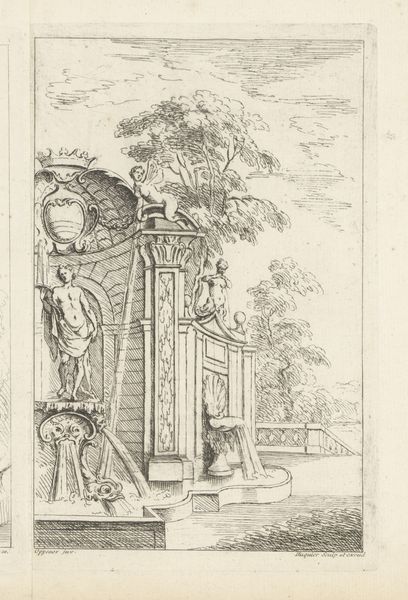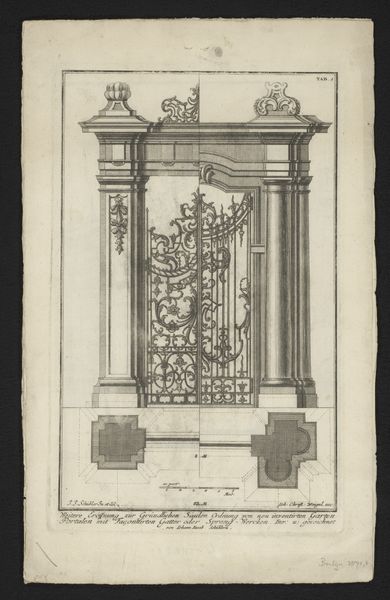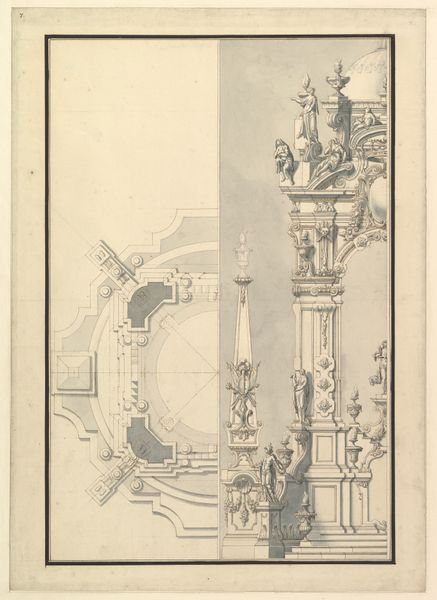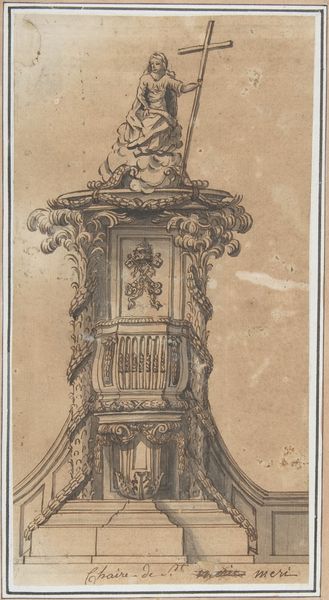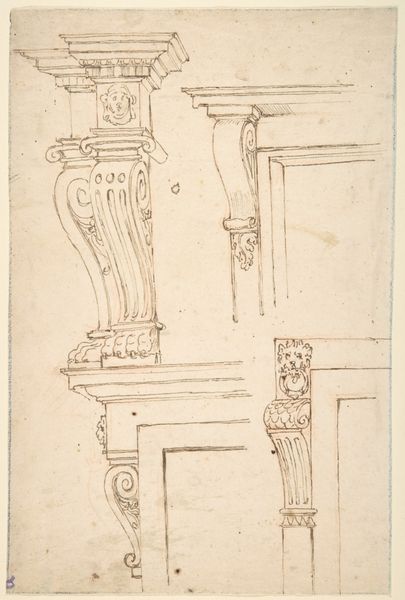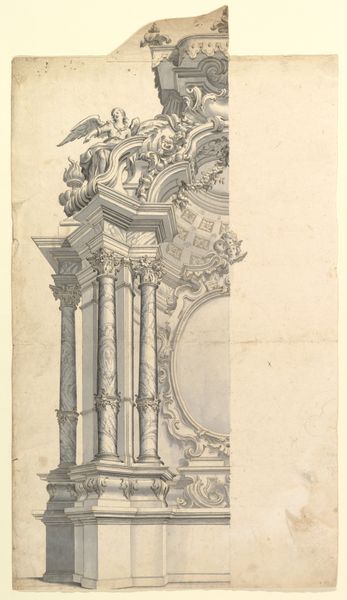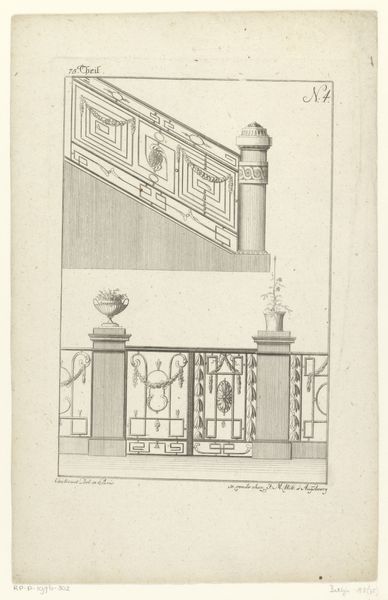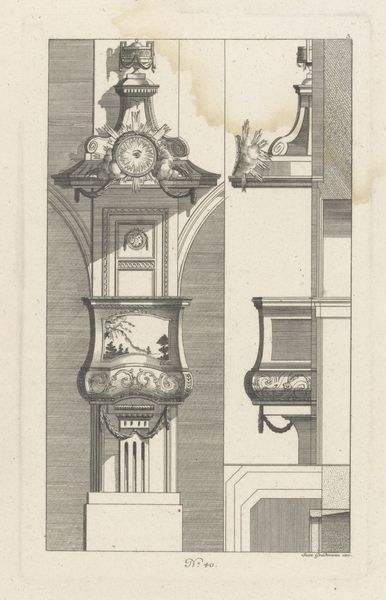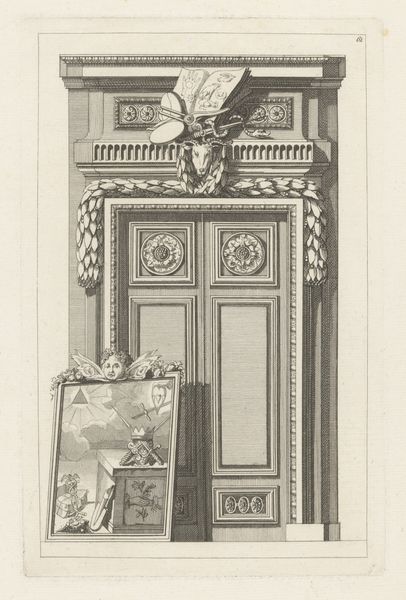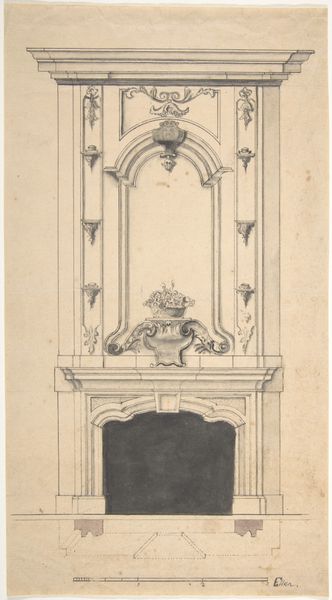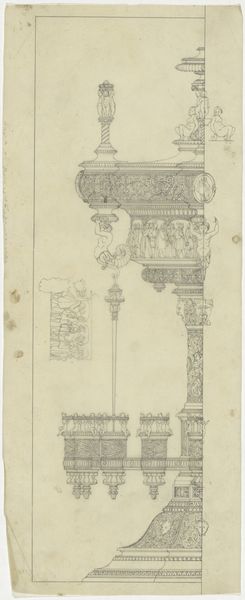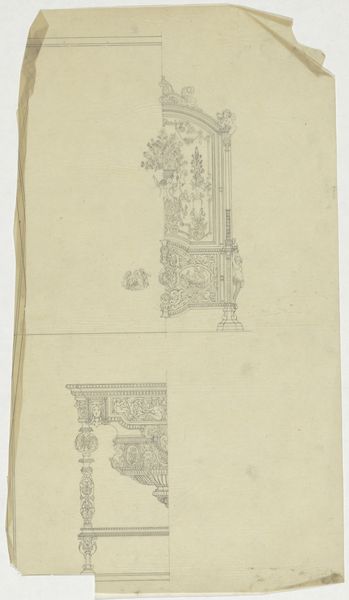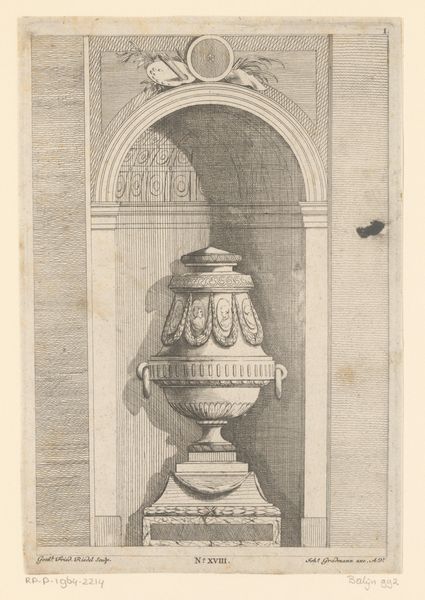
Alternate Designs for Decorated Bases or Pedestals 1700 - 1800
0:00
0:00
drawing, print, pencil, architecture
#
architectural sketch
#
drawing
#
neoclacissism
# print
#
geometric
#
pencil
#
history-painting
#
architecture
Dimensions: 9 9/16 x 6 1/8 in. (24.3 x 15.6 cm)
Copyright: Public Domain
Curator: Here we have "Alternate Designs for Decorated Bases or Pedestals," an architectural sketch dating back to the 18th century, currently held at the Metropolitan Museum. What strikes you first about this drawing? Editor: Well, I’m immediately drawn to the precise pencil work, those delicate lines. It hints at a craftsman's deep understanding of form and the tangible elements they would need to bring those objects into being. But also… it feels somewhat sterile. Curator: Interesting observation. I see the precision you mention. But sterility? Look at the urns topped with what appear to be flames, evoking classical ideals and a sense of enduring artistic inspiration. And consider the decorative masks – symbols of protection, or perhaps even theatricality – watching over the spaces these pedestals would define. Editor: True, the motifs carry weighty connotations, yet I can't shake the feeling they are divorced from the real world, caught in a sort of Platonic realm of pure form. I am thinking of the stonemason tasked to execute these. Would they feel similarly, I wonder, given these constrictions and demands of Neoclassical ideals. Curator: Perhaps. Though the style of Neoclassicism prized rationality, order, and, of course, the echoes of antiquity. In these designs, think of the bases less as mere functional support, but as bearers of cultural memory. The horns-masks, the stylized floral ornamentation: they evoke narratives, almost like miniature history paintings translated into three dimensions. Editor: Right, they borrow heavily from the Roman Empire. All that detailing, all that labour condensed onto small, manageable surfaces; it makes one consider the market for such refined designs. Who would own these items? What kind of lives, and needs would the finished articles serve? Curator: Indeed, a pertinent point. These designs offer us insight into the period's aspirations. It seems we’re peering at once at cultural ideals, and the actual economic contexts shaping the craft. Thank you, it brings another, needed dimension. Editor: Glad to offer a slightly different angle! This quick detour makes the piece seem so much richer in potential than its precise lines might originally have betrayed.
Comments
No comments
Be the first to comment and join the conversation on the ultimate creative platform.

